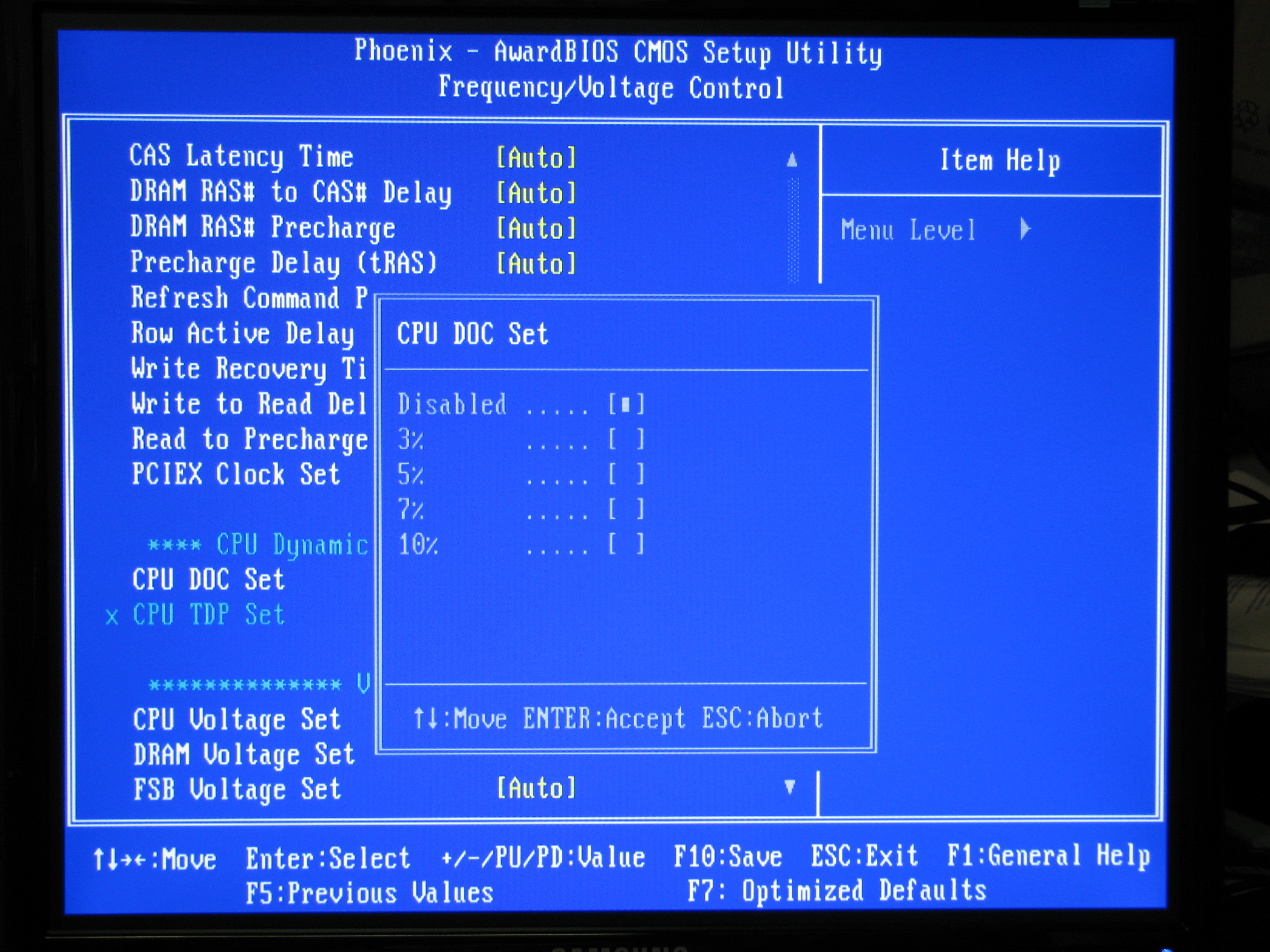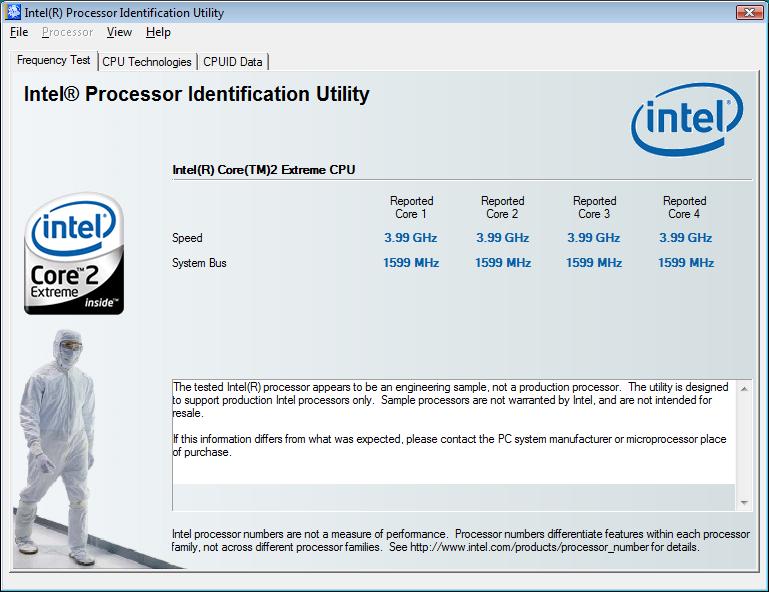Shuttle XPC Prima P2 4800X System Review
Overclocking
Shuttle includes “Dynamic Overclocking (OC) Technology,” as a BIOS feature, which provides overclocking generated CPU clock speed boosts of 3%, 5%, 7%, and 10%. The system also allows manual adjustments to be made to the voltage and frequency settings.
These options allow simple overclocking speed boosts by up to 10% and manual overclocking that provides fairly granular options.
The CPU
When we first tested the SX48P2’s overclocking capabilities, it was unable to overclock at all. It would only accept multipliers of 6-8 and could not overclock the FSB. Shuttle then offered the X48S10Q BIOS update in October, which we installed over the rather old X48S10F BIOS. The BIOS update resolved the multiplier issue and we were even able to use various multipliers. However, we found that the highest stable overclocking speed we were able to achieve was 4.07 GHz. We were only able to get the system to reach this speed by increasing the CPU voltage to 1.375 V.
Through a bit more testing with a pair of lab processors, we came to the conclusion that Shuttle's Dynamic OC Technology does not work if there is no FSB headroom. The QX9770 would not work with even the lowest setting of 3 % with Dynamic OC Technology, which just seems to only bump up the FSB to achieve its overclocking results.
To confirm that the system remained stable when overclocking, we ran Prime95 for eight hours on all four CPU cores and no errors were reported.
Get Tom's Hardware's best news and in-depth reviews, straight to your inbox.
-
StupidRabbit ReplyIt's an oldie, but a goody. We take apart a Shuttle XPC Prima P2 4800X, based on Intel's X48 chipset, and test this fully-built system's mettle against XPCs that came before. Our conclusion? You could do better for less if you built your own.
lol i didnt even have to read the article since you put the conclusion right in the description on the main page.. but i guess it couldnt have ended any other way. overpriced. -
BillLake StupidRabbitlol i didnt even have to read the article since you put the conclusion right in the description on the main page.. but i guess it couldnt have ended any other way. overpriced.Reply
Well I don't see that in the article anywhere. It would seem that you might be quoting something else but the concussion is true. For those looking for a SFF it is overpriced for what it provides. You can say the same about any customer builder, Falcon Northwest, Alienware and so forth. They all sell their products for a huge premium but they do give you warranties on your "super fast and overclocked system". For me, I really like the SFF so I buy the barebones version of Shuttles products and am very happy with them. -
StupidRabbit well at one point i myself was thinking of buying a thermaltake lanbox. but since i dont go to any lan parties and have no need to carry my rig around, i just could not justify a small form factor box over a mid-sized one. as you said it really is a very niche market, and i guess i am just not one of the consumers that is targeted.Reply
nontheless, it is one cool looking thing and has more performance than most gamers need, and you are a lucky guy to have their products.
but until i transform into a really hardcore gamer, and have a couple grand laying (lying?) around im just gonna stick with my trusty intel e6420 overclocked by 50% and a thermaltake big-typ vx-10.. something that would have a hard time fitting in there -
BillLake Yeah you might be able to get some other heat sink in there but it would be hard as they really designed it for this one. Maybe remove the side fan and get one that blows out that same side?Reply
The reason I like the Shuttle boxes is that they take up little room and you generally do not give up much. Now that said they do lack expandability but of course I can put three in the space of a full tower case. Look at the barebones units, they are very affordable but then again if something fails you have to get their board to fix it and that is not cheap. -
cletus_slackjawd I have a shuttle XPC with an athlon64 3000+ skt 754, 1gig ram, x800pro, 1gb DDR-400 dual channel, sony DVD Burner and 300gb maxtor IDE PATA.Reply
It's based on the Nforce2 so it has good audio by Nvidia, firewire, great access up front w/ 2ea USB, Mini 1394 in front, normal in back, speaker, mic, headphone jacks up front, memory card readers up front, mirror finish up front, quiet, reliable as hell. It's actually now my wife's rig as I've built 2 new computer since handing it down, but it's pretty awesome. I will repurpose it as a media PC/Console Emulator when the time comes she wants a new one. In conclusion, a very positive experience from a Shuttle product. -
1potato Page 3 - "RAID supports stripping for improved data security". Made me chuckle :). I think you mean striping, and actually I think you really mean mirroring in that context.Reply -
gaiden2k7 you guys really need someone who knows his/her way w/ the camera.. blurry pictures = dizzy viewers.Reply -
BillLake Thanks for catching the miss use of the word, spell check can save you from misspelling but not miss use. The system could do Striping, mirroring or striping with parity if you put three disks in. It support three disk by putting one below the optical drive. Shuttle does not sell it with 3 drives but I have done it. Well thanks again for catching that.Reply

